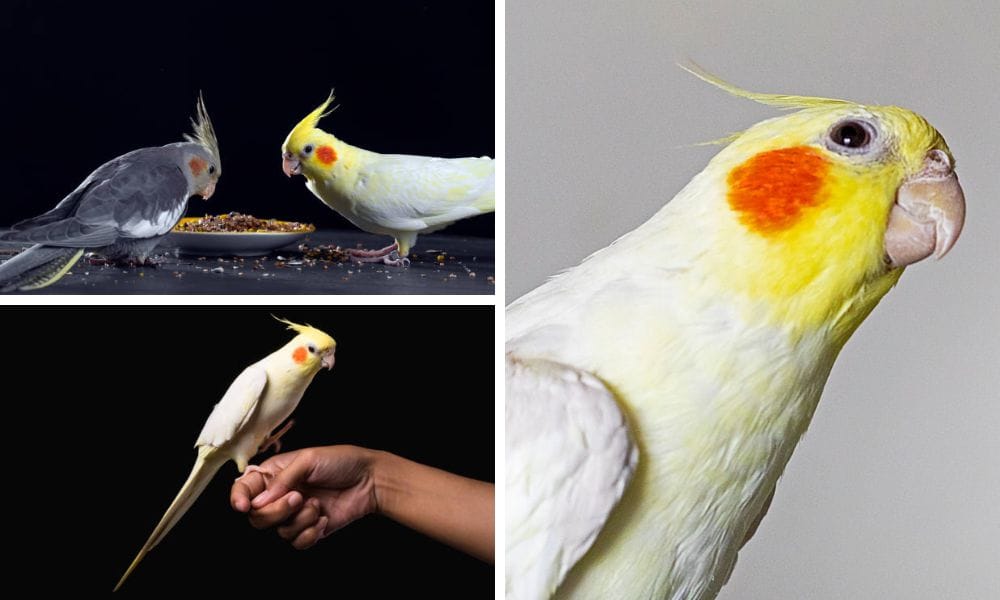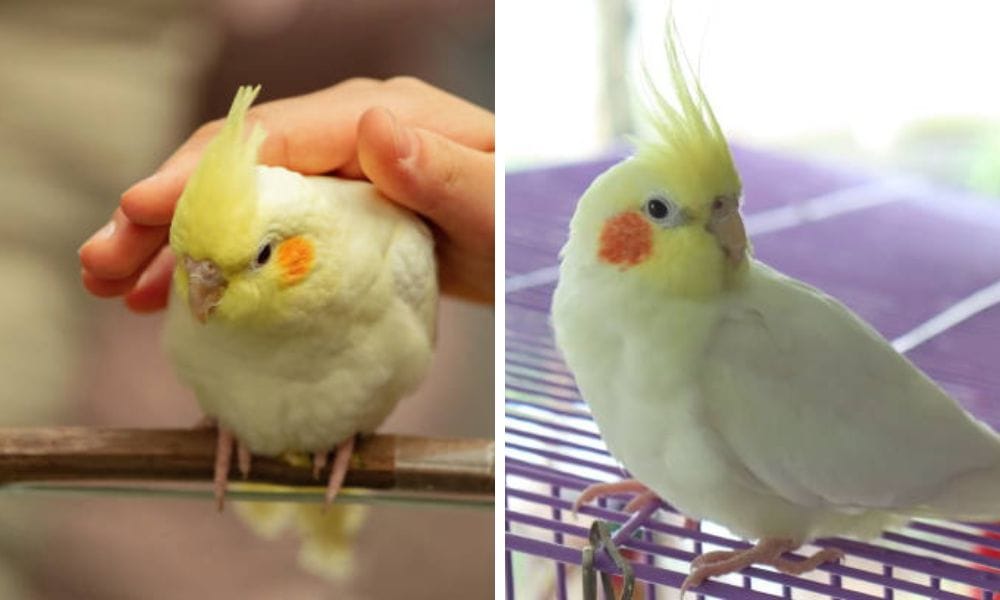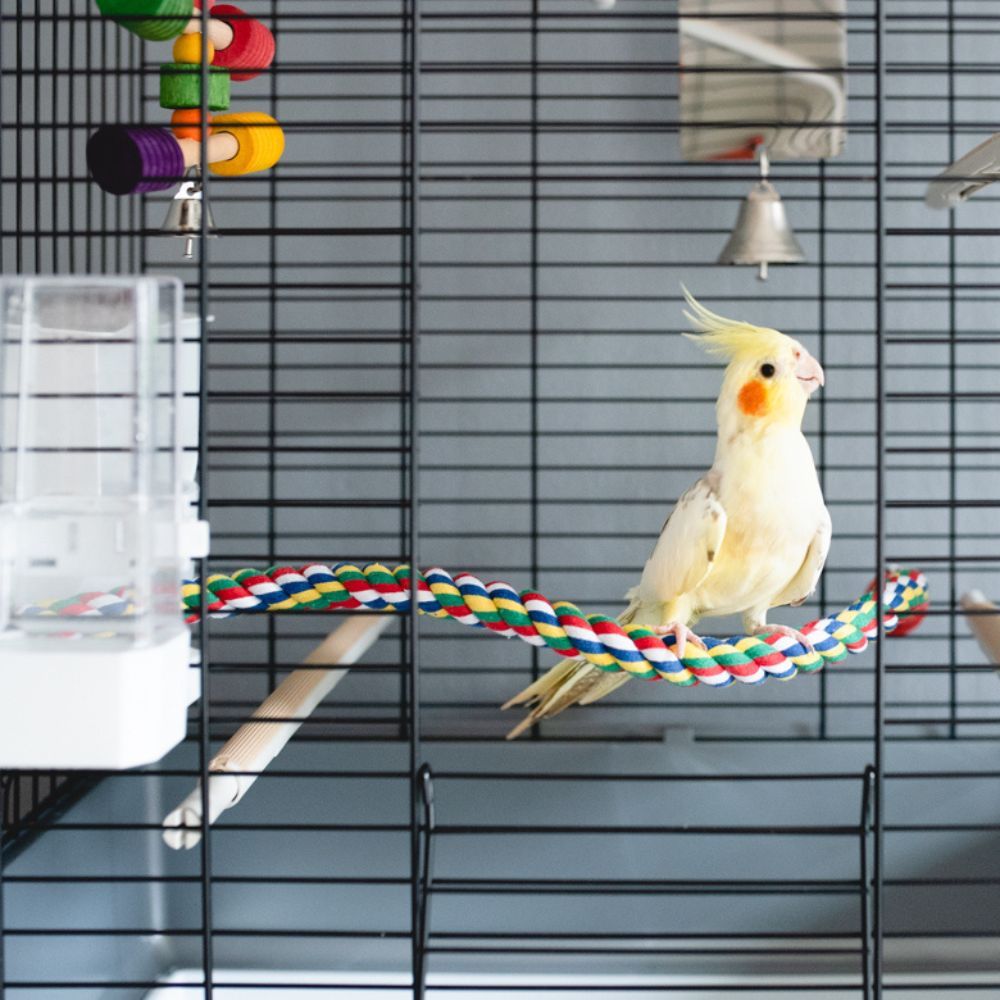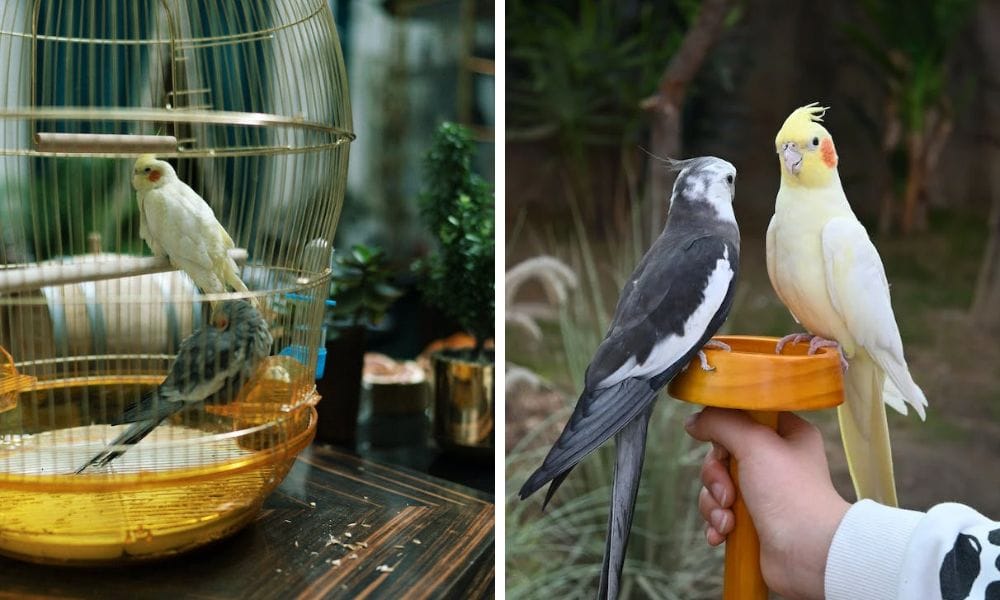The Social Life of Yellow Cockatiel: Understanding Its Needs
Explore the social needs of Yellow Cockatiels, from their bonding patterns to their communication habits and what influences their mental well-being.

Key Takeaways:
- Yellow cockatiels, particularly the lutino mutation, require social interaction for their well-being.
- Recognizing the differences between male and female cockatiels can help in providing appropriate companionship.
- Providing a stimulating environment with toys, nest boxes, and potential for interaction is crucial for these pet birds.
Yellow cockatiels, with their bright yellow feathers and cheerful dispositions, have captivated bird lovers worldwide. As a member of the cockatoo family, these birds are known for their social nature and the need for interaction. Understanding the social life of these beautiful pet birds is essential for any cockatiel owner or enthusiast. This article will delve into the intricacies of their social needs, behaviors, and how to ensure a happy, healthy life for your feathered friend.
The Lutino Gene and Its Impact on Social Behavior
The lutino cockatiel is one of the most popular color mutations within the species. These birds are characterized by their white to light yellow plumage and red eyes. The lutino gene removes the gray pigment, resulting in the yellowish tint and bright orange cheek patches that are so adored. But beyond their striking appearance, the lutino gene does not affect their social needs. Like the normal grey cockatiel, lutinos are gregarious and thrive on interaction.

Male and Female Cockatiels: Understanding Their Social Dynamics
When it comes to social interactions, male and female cockatiels can exhibit different behaviors. Male lutino cockatiels are often more vocal and may be inclined to talk cockatiels more than females. They display their long tails and bright yellow feathers during courtship. On the other hand, female pearl cockatiels, which may have a more subdued color palette with prominent white flashes, are typically less vocal but can be equally social. Recognizing these differences is key to providing the right companionship for your bird.
The Importance of Flock Mentality in Captivity
In the wild, cockatiels, part of the genus Nymphicus hollandicus, are rarely found alone. They have a strong flock mentality, which is an important aspect to replicate in captivity. A single cockatiel can become lonely and stressed without the company of other birds. Introducing a second cockatiel mutation, such as a cinnamon cockatiel or a pied mutation, can provide the necessary social interaction and prevent behavioral issues.

Creating a Social Environment for Your Cockatiel
The bird cage is more than just a space for your cockatiel; it's their home and social playground. Equipping the cage with toys, mirrors, and a nest box can stimulate your cockatiel's mind and encourage social behavior. The nest box, in particular, can be a source of comfort and security, especially if you have a breeding pair. It's important to ensure that the cage is spacious enough to accommodate these additions without crowding the bird.

The Role of Human Interaction in a Cockatiel's Life
While the company of other birds is important, human interaction also plays a significant role in a cockatiel's social life. Spending time talking to and playing with your cockatiel helps to strengthen the bond between bird and owner. Training sessions can also be a fun way to interact and keep your cockatiel mentally stimulated. Remember, a cockatiel with bright orange cheek patches and a yellow crest loves attention and will often seek it from their human companions.

Recognizing Signs of Social Distress in Cockatiels
Cockatiels communicate their social needs in various ways, and it's crucial to be attentive to signs of distress. A cockatiel that is consistently fluffing up its facial feathers covering or is unusually quiet may be signaling a need for more interaction. On the other hand, an overly aggressive bird might be feeling territorial and could benefit from more space or a change in the social dynamic within the cage.

Deciphering the Colors: The Spectrum of Yellow Cockatiel Varieties Yellow cockatiels, with their vibrant yellow head and contrasting orange cheek patch, are a sight to behold. These beautiful pet birds come in a variety of shades and patterns that can tell us a lot about their genetics. The lutino pearl, for instance, is characterized by a light yellow body with a speckled pattern, resembling pearls strewn across their feathers. This variety, along with the lutino pied, showcases the diverse expressions of the lutino gene, which removes the grey pigment and enhances the yellow and white plumage.

In addition to the lutino variations, there are other parrots in the cockatiel family that exhibit a range of colors. The wild type, or the 'normal' cockatiel, is primarily grey with a yellow face and orange cheeks. Breeders, however, have developed a multitude of color mutations such as the albino, which lacks pigment entirely, and the blue cockatiel, which is actually a white bird with a blue hue due to light reflection. Each color variation, from the light grey wings to the bright yellow face, contributes to the rich tapestry of the cockatiel's plumage.
Cockatiel Aviaries and Breeding Enthusiasts: A Closer Look The world of aviculture is teeming with enthusiasts who specialize in breeding and raising cockatiels. One notable figure is Cliff Barringer, who founded the Florida Parrot Jungle, a haven for parrot family aficionados. His work and others like him have significantly contributed to the understanding and propagation of various cockatiel breeds. These breeding experts pay close attention to the genetics of the birds, ensuring the health and vitality of each generation, from the lutino pied to the pearl pied.

Breeding cockatiels is both an art and a science, requiring a deep understanding of their social and environmental needs. For instance, the male cockatiel often sports a more vibrant yellow face and a prominent orange cheek patch, which can become more pronounced during the breeding season. Breeders like those at the Florida Parrot Jungle also focus on the social aspects of breeding, providing ample space and enrichment to mimic the cockatiel's natural habitat. This attention to detail ensures that the cockatiels, whether they have a light grey body or a bright yellow head, thrive in both the wild and in captivity.
The Impact of Diet on Social Behavior
A balanced diet is not only vital for a cockatiel's physical health but also for their social well-being. A malnourished bird can become lethargic and less inclined to interact. Ensure your cockatiel's diet includes a variety of seeds, fruits, and vegetables to maintain their bright yellow feathers and overall vitality. A healthy cockatiel is more likely to be an active and social companion.

The Influence of Breeding on Social Needs
Breeding cockatiels can bring about significant changes in their social behavior. The presence of a nest box can trigger nesting instincts, especially in females. During this time, it's important to respect their space and provide a calm environment. Male and female cockatiels may become more territorial and less tolerant of other birds or even their human caretakers. Monitoring their behavior closely during the breeding season is essential.
The Joy of Multi-Bird Households
For those who have the space and resources, keeping multiple cockatiels can be a rewarding experience. Observing the social interactions between a gorgeous lutino cockatiel, a female pearl cockatiel, and perhaps a normal grey cockatiel can be fascinating. They may preen each other's tail feathers, share food, and engage in playful antics. However, it's important to introduce new birds slowly and monitor their interactions to ensure harmony within the flock.

The Significance of Play and Exercise
Playtime is a crucial aspect of a cockatiel's social life. Toys that encourage foraging, climbing, and problem-solving can keep your cockatiel engaged and happy. Exercise is equally important; allowing your cockatiel to fly outside the cage in a safe, bird-proofed room can provide the physical activity they need. This also presents an opportunity for social interaction with other birds or humans in the household.

The Role of Aviculture Clubs and Online Communities
Connecting with other cockatiel owners through aviculture clubs or online communities can be beneficial for both you and your bird. Sharing experiences and advice with others in the aviculture world can provide insights into socializing your cockatiel. Additionally, these communities often organize meetups or bird shows where your cockatiel can interact with other birds under supervised conditions.
The Need for Regular Health Check-Ups
Regular veterinary check-ups are important to ensure your cockatiel's social behavior isn't affected by underlying health issues. A sick bird may withdraw from social interactions or exhibit unusual behavior. A vet specializing in pet birds can offer advice on maintaining your cockatiel's health, which in turn supports their social needs.

Summary
Yellow cockatiels are social creatures that require interaction to thrive. Understanding the nuances of their social needs, whether it's recognizing the differences between male and female cockatiels, providing a stimulating environment, or ensuring proper nutrition, is essential for their well-being. By being attentive to their behavior, offering companionship, and engaging in regular play and exercise, you can ensure a happy and healthy life for your vibrant feathered friend.

FAQ Section
Q: Can yellow cockatiels be kept alone? A: While yellow cockatiels can be kept alone, they are social animals and do best with companionship. This can come from other cockatiels, other birds, or regular interaction with their human caretakers.
Q: How can I tell if my cockatiel is lonely or bored? A: Signs of loneliness or boredom in cockatiels can include a lack of vocalization, feather plucking, lethargy, or aggression. Providing toys, interaction, and possibly the company of another bird can help alleviate these issues.
Q: Is it better to get a male or female cockatiel for social interaction? A: Both male and female cockatiels can be social, but they may exhibit different behaviors. Males are typically more vocal and may engage more in mimicry, while females can be quieter but still enjoy interaction. The best choice depends on the owner's preferences and the individual bird's personality.

